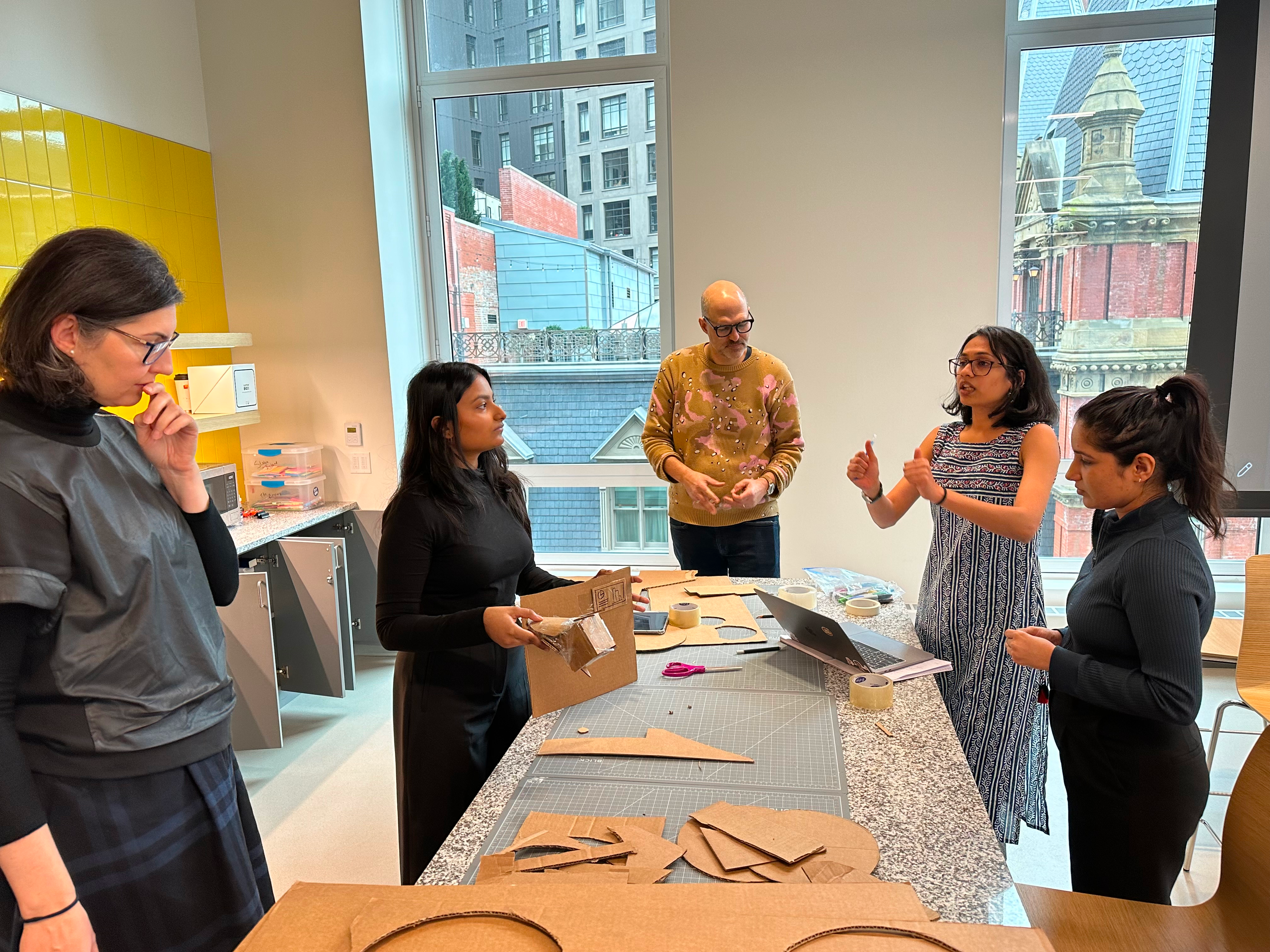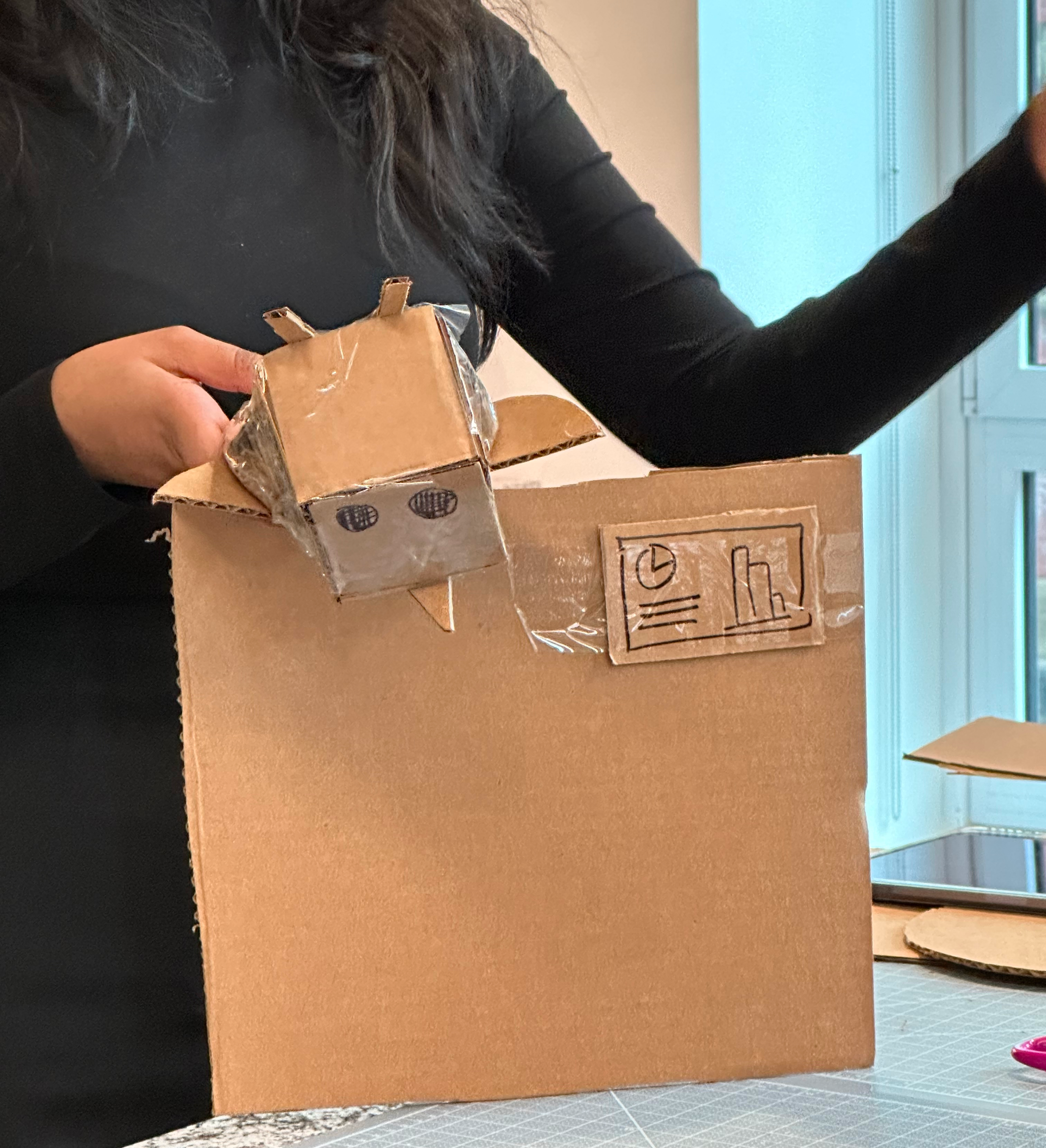Catching Up
Hey there !
The DesignSeers are back from the hibernation period, settling into Phase 2. In case you are wondering what we’ve been up to, the 4 of us visited India for our winter break for the much needed time with our families, and big news – one of us got married !
In this blog, we’ll be sharing updates on our Phase 2 progress and diving into the journey that led us to our current problem statement. Resuming where we left off, our presentation at IdeaSquare showcased two ideas. We decided to proceed with the challenge :
How might we minimise crop failures, while simultaneously improving the overall quality of crops?
After finalising the opportunity area, our next few brainstorming sessions focused on widening our perspective with respect to the problem statement. The aim was to truly understand the space, discover what is currently happening in the space – trends and innovation, and find unmet needs and limitations to discover pieces we can innovate upon. Our solution needed another iteration to cater to a wider problem space and not focus only on Vertical farming. To broaden our scope beyond vertical farms, we decided to explore additional urban agricultural spaces such as greenhouses and rooftops, taking into account the unique environment and urban ecosystem of New York City.
2030 Future Scenario
As next steps to have a better understanding of our solution space, we imagined what the possible future society in 2030 looks like, to contextualise the world our design solution may exist within. The tool we used to do this consisted of identifying a future scenario based on ARUP’s 2050 futures. We took inspiration from ARUP’s “Human Inc” future scenario, and using STEEPLE framework we derived a more direct streamlined future scenario.


From all the above exercises and discussions we gained a lot of new perspectives. Continuing with exploring solution space, taking inspiration from traditional farming methodologies, we decided to enhance the system rather than replacing the existing one. An integral part of this process was identifying heirloom seeds through Hylight (Attract tech) in the initial phase. However, we recognized a missing element: the ability to monitor crop health and gather data to understand patterns in their life cycle. This realisation led us to further define our system and its potential components, including scanning seed quality, using drones to monitor crop health (moisture and nutrient levels, and potential pest issues), and implementing a Farmer Notification System.
Rapid Prototyping
Considering all the things discussed until now, we tried our hands at rapid prototyping with a short introduction by our professors on some basic prototyping techniques. Zooming into a system, we decided to focus on one aspect of the solution, that is monitoring the crop’s health. We came up with the idea of a drone the size of a bee which will have highlight sensors in them and they scan the crop and let us know if things are going wrong. The aim here was to be able to detect things going wrong from the cellular level itself. We went for the obvious choice for the name – Bee Drone.

NYCDF in Action

Scan, Collect, Alert
Updating Problem Statement
The lingering thoughts of having a drone to track the health of crops, a question striked our mind “ what if we shrunk those robots to be inside a plant?” Using this as an inspiration we stumbled upon a research paper written by a team from MIT, which touched upon the aspects of Cyborg botany. The research was about using plants as a next step in human computer interaction. The experiment conducted by the team showcased a prototype reacting to human interaction using a probe and a sensor to digitise the electric signals from plants.
This brings us to our first part of the solution statement – Seed to Sustainable Harvest.




Behavior Change and Second Phase of Problem Statement
Inspired by Prof. Kirstin Kohler’s enlightening lecture on “Design for Behaviour Change” and the thought-provoking activities that followed, we circled back to our original goal at IdeaSquare : to bring food closer to people, both physically and emotionally.
This led us to introduce a front-end addition to our project—an innovative fusion of farming and museum experiences aimed at transforming food into an immersive journey and nurturing healthier relationships with it. As we delved deeper, we discovered the potential of cyborg botany for educational purposes, prompting us to integrate it into the museum experience.
Our overarching theme is to alter people’s attitudes toward food by bringing it closer to urban areas, promoting transparency, and offering educational insights. By combining interactive cyborg plants with urban farms, we hope to foster awareness and community involvement in food production methods.



Our formula: Farm Experience + Museum Experience = A transformative journey with food that inspires behavioral change.
We’re currently in the process of further refining this front-end solution and look forward to sharing our progress soon !


Recent Comments